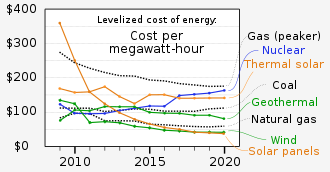Although electricity and the abundance of wind and solar generation will be the main subject of the transition to zero, the global energy system is still complex, with large plants in areas that are difficult to decarbonize and which are not decarbonized. Big tech companies can also play a big role.
Big tech companies pioneered League City Energy Plans -power purchase agreements (PPAs) for renewables. In 2020, the Big Five technology companies purchased 7.2 gigawatts (GW) of renewable capacity, representing nearly 30% of all renewable industry PPAs, or about 3.5% of the additional universal rights that can be renewed. Among the largest technology companies in the United States, it has become common practice to purchase the same amount of electricity from renewable sources as their annual consumption.

Estimating the impact of renewable energy purchases is not easy. Since the financial strength of large technology companies exceeds that of many national states, long-term contracts with unions provide strong financial security and help invest in projects in attractive conditions. In some cases, the money is backed by the company’s equity investment. This has played a significant role in increasing investment in renewable energy. There is also evidence that investment by large technology companies has influenced policy decisions and renewable directions, for example, leading to measures to improve grid access.
Purchases and investments in renewable energy
In most cases, the contract is only for money. Since the database is physically operated by the local company and sells new generations to the market, the company raises different prices for renewal services, such as currency exchange. This is a good practice for investing in jobs, but it also allows finding jobs where they have the greatest impact by replacing carbon production. Curiously, this change has not always been fully utilized. Despite these companies’ global reach, their purchases and investments in renewable energy are concentrated in the countries where their servers are located – the United States and North western Europe.
However, this raises an important additional question: will the growth of renewables be possible without a commitment from the technology industry? There are even examples of large tech companies subcontracting the project effort when it is almost certain that the project will be completed anyway. In the United States, wind and solar projects benefit from federal tax credits, so it is the American taxpayers who should be thanked. In Europe, the main target countries are those where the combination of strong policy and successful grid integration is leading to strong investor demand for renewable projects. In an environment with low-interest rates, renewable energy is already benefiting in these countries from low financing costs. In other words, if a big tech company doesn’t support one wind farm, someone else might.
These companies can use more of their financial power to sign up for renewable energy investments where they are most needed: in emerging economies where coal is still considered essential for energy security and an investment destination. in adapting from a constrained capital shortage. Data demand will grow rapidly in emerging economies over the next few decades, requiring new data centres in these regions to meet growing needs. This is a potential opportunity to join the company’s new climate commitment. But the biggest opportunity for technology companies is to leverage their efforts to make fundamental changes across the entire energy system, beyond their supply chain. There are five areas where the combination of skill, scope, and contribution can make a difference.




